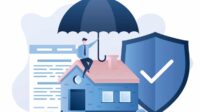In Case of a Fire: Home Insurance and Fire Damage Coverage
When disaster strikes, it’s crucial to have a safety net in place to protect your most significant investment – your home. In the event of a fire, the consequences can be devastating, both emotionally and financially. Home insurance is the shield that can help you rebuild and recover from the ashes. In this article, we will explore the intricacies of home insurance and fire damage coverage, ensuring you have the knowledge to safeguard your home and loved ones.
Understanding Home Insurance
What is Home Insurance?
Home insurance, often referred to as homeowner’s insurance, is a financial safety net designed to protect your home and its contents in case of various perils, including fire. It is a contract between you and an insurance company where you pay regular premiums, and in return, the insurer provides coverage for damages and losses.
Types of Home Insurance
There are several types of home insurance, including HO-1, HO-2, HO-3, HO-5, and HO-6 policies. HO-3 is the most common, offering broad coverage for your dwelling and personal property, while HO-6 is designed for condominium owners. Each policy type has its specific coverage and limitations.
Importance of Home Insurance
Home insurance is not just a financial requirement; it provides peace of mind. It ensures that you won’t face financial ruin if your home is damaged or destroyed by a fire or other covered perils. It’s a crucial part of responsible homeownership.
Fire Damage: A Common Peril
The Frequency of Home Fires
Fires can happen to anyone, anywhere. In the United States, there were approximately 1.3 million fires reported in 2020, resulting in 3,654 deaths and 16,600 injuries. These statistics highlight the importance of being prepared for fire-related incidents.
Types of Fire Damage
Fires can cause various types of damage, including structural damage to your home, damage to personal belongings, and smoke and water damage. Understanding these different types of damage is essential for filing accurate insurance claims.
The Emotional Toll
In addition to the physical damage, fires can take a significant emotional toll. The trauma of losing your home and possessions can be overwhelming. Home insurance helps alleviate some of the emotional distress by providing financial support for recovery.
Home Insurance and Fire Coverage
Standard Home Insurance Policies
Standard home insurance policies typically cover fire damage as one of the named perils. However, it’s essential to understand the coverage limits, deductibles, and terms of your policy. Always review your policy to ensure you have adequate fire coverage.
Extended Fire Coverage
If you live in a high-risk area prone to wildfires, you may need extended fire coverage. This coverage often includes wildfire-specific protection and may be required by your mortgage lender.
What’s Typically Covered
Standard home insurance policies usually cover the cost of repairing or rebuilding your home, replacing personal property, and additional living expenses (ALE) if you need to temporarily relocate due to the fire damage.
Factors Affecting Fire Damage Coverage
Geographic Location
Your home’s location plays a significant role in determining your fire risk. Homes in wildfire-prone areas or regions with a history of frequent fires may have higher premiums or require additional fire coverage.
Home Value and Coverage Limits
The value of your home and your coverage limits affect the amount of reimbursement you can receive after a fire. Make sure your coverage adequately matches your home’s value.
Home Age and Building Materials
Older homes with outdated electrical systems or flammable building materials may face higher fire risks. Consider home renovations and upgrades to reduce these risks.
Mitigating Fire Risks
Fire Safety Measures
Prevention is key. Implement fire safety measures like installing smoke detectors, fire extinguishers, and creating a family evacuation plan. These measures can save lives and reduce the severity of fire damage.
Investing in Prevention
Consider investing in fire-resistant roofing, siding, and windows. These enhancements can not only reduce the risk of fire damage but also lower your insurance premiums.
Keeping Your Insurance Costs Down
Maintain a good insurance score, bundle your policies, and inquire about available discounts to keep your home insurance costs affordable.
Filing a Fire Insurance Claim
Initial Steps
When disaster strikes, contact your insurance company immediately. They will guide you through the initial steps and help you start the claims process.
Documenting the Damage
Thoroughly document the fire damage by taking photos, making a list of damaged items, and keeping all receipts related to repairs and temporary living expenses.
The Claims Process
Understanding the claims process is essential. Be prepared to provide all necessary information and cooperate with your insurance company to expedite your claim.
Common Exclusions
Arson and Fraud
Home insurance won’t cover damage caused intentionally, such as arson. Additionally, fraudulently inflating claims can lead to denial of coverage.
Negligence
If the fire was the result of negligence, such as unattended candles or unpermitted fireworks, your insurance claim may be denied.
High-Risk Items
Expensive or high-risk items like jewelry, collectibles, and artwork may require additional coverage or scheduled endorsements to be fully protected.
Understanding Coverage Limits
Actual Cash Value vs. Replacement Cost
It’s crucial to understand the difference between actual cash value and replacement cost coverage. The latter provides a higher level of reimbursement but may come with higher premiums.
Deductibles
Deductibles are the out-of-pocket costs you’re responsible for before your insurance kicks in. Consider your financial situation when choosing your deductible.
Coverage Caps
Some policies have coverage caps, meaning there’s a maximum amount your insurance will pay out for certain items. Be aware of these limits to avoid surprises when filing a claim.
Additional Living Expenses (ALE)
What Are ALE?
Additional Living Expenses (ALE) cover the cost of temporary accommodations, food, and other essential expenses if you can’t stay in your home due to fire damage.
How to Use ALE
Keep receipts and document your expenses to ensure smooth reimbursement from your insurance company.
Limits and Duration
Understanding the limits and duration of ALE coverage is essential. Policies may have a maximum payout or a specific timeframe for ALE.
Reviewing and Adjusting Your Policy
Periodic Policy Reviews
Regularly review your home insurance policy to make sure it still meets your needs. Life changes, and your insurance should change with it.
Reassessing Coverage
After home renovations or major life events, such as marriage or having children, reassess your coverage to ensure it’s still adequate.
Working with an Insurance Agent
An insurance agent can help you navigate your policy and find the right coverage for your needs. They can also assist in making policy adjustments.
Home Inventory: Its Importance
Creating a Home Inventory
A detailed home inventory is a valuable tool for filing insurance claims. It includes a list of your belongings, their value, and supporting documentation.
Digital Inventory Tools
Consider using digital inventory tools to create and update your home inventory. These tools make the process more convenient.
The Role of a Home Inventory in Fire Claims
In case of a fire, your home inventory will be crucial in documenting lost or damaged items and expediting the claims process.
The Cost of Home Insurance
Premium Factors
Various factors affect your home insurance premiums, including your location, home value, coverage limits, and your chosen deductible.
Discounts and Savings
Many insurers offer discounts for home safety features, bundling policies, and having a good claims history. Explore these options to save on your premiums.
Comparing Policies
Don’t settle for the first policy you find. Compare quotes from multiple insurers to ensure you’re getting the best coverage at the most affordable price.
Switching Insurance Providers
Reasons for Switching
There may be various reasons for switching insurance providers, including better rates, improved coverage, or a change in your circumstances.
How to Make a Smooth Transition
When switching insurers, make sure there’s no coverage gap. Work with your new and old insurers to ensure a seamless transition.
Cancellation and Refunds
Understand the cancellation process with your current insurer and whether you’re entitled to any refunds of prepaid premiums.
Claims Assistance and Advocacy

Public Adjusters
A public adjuster can help you navigate the claims process, ensuring you receive a fair settlement from your insurance company.
Legal Recourse
In some cases, legal recourse may be necessary to resolve disputes with your insurance company. Consult with an attorney experienced in insurance law.
Conclusion
In case of a fire, home insurance is your lifeline. It provides the financial support needed to rebuild and recover from the devastating effects of fire damage. Understanding the intricacies of your policy, taking preventive measures, and having a well-documented home inventory are key steps to ensure you’re prepared for any fire-related eventuality.
FAQs :
- What is the importance of home insurance in protecting against fire damage?
Home insurance is vital in safeguarding your home and possessions from the devastating effects of fire damage. It provides financial support to help you recover and rebuild.
- How do I ensure I have adequate fire damage coverage in my home insurance policy?
Review your policy regularly, consider your home’s location and value, and discuss your coverage with your insurance agent to ensure it’s sufficient.
- What steps should I take immediately after a fire to file an insurance claim?
Contact your insurance company, document the damage, and follow their guidance to initiate the claims process.
- Are there common exclusions in home insurance policies for fire damage?
Yes, exclusions can include damage caused by arson, negligence, and certain high-risk items. It’s essential to be aware of these limitations.
- How can I lower my home insurance costs while maintaining adequate fire damage coverage?
Maintaining safety measures, bundling policies, and exploring available discounts are effective ways to reduce your home insurance costs.






